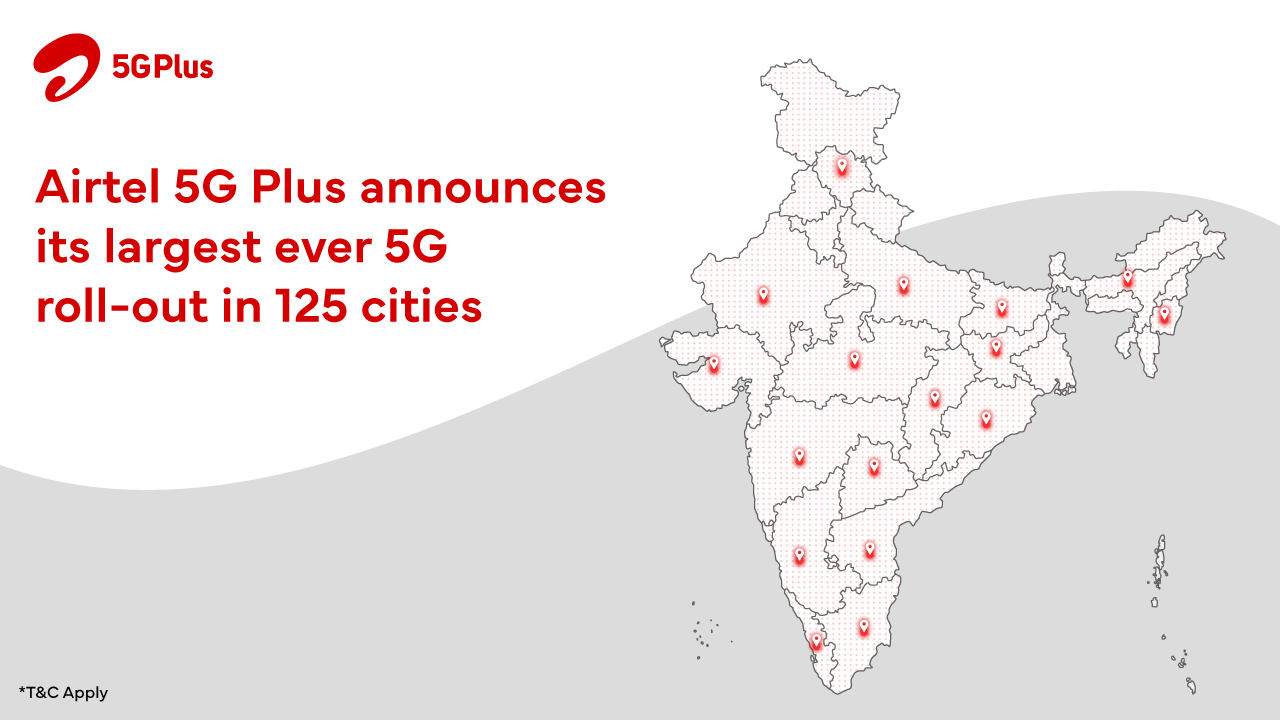Telecom Services
Widening ICT Skills Gap

 By Ninad Desai
By Ninad Desai
Our ICT and telecom industry is well into the 21st century. So why isn’t our education system geared up for what needs to be delivered to upcoming professionals to look forward to making a career in this field?
Today’s jobs are vastly different than they were a generation ago. An ICT professional having knowledge and understanding of only a specific area could survive easily around a decade back however it’s a different story altogether in this changeable and unpredictable world.
The days of working for 40 years at one job and retiring with a good pension are gone. Now the average time in a single job is 4.2 years, according to the US. Bureau of Labour Statistics. What’s more, 35% of the skills that workers need today— regardless of industry — will have changed by 2020.
What’s more alarming to notice is with the rising adoption of automation and artificial intelligence the low skilled job requirement would see a 35% decrease by 2022 as per the report of US based research firm HfS research.
Nasscom, an Indian association of IT companies too has said categorically stated in its recent communique to its members to re-skill or perish in the next five years. What’s important to know here is that the medium and high skilled jobs are expected to grow and are not really facing the same challenge although they would grow marginally.
Skills for the wrong century
Here’s the problem, in a nutshell. The job opportunities that are available today are for professionals who understand and build the ICT and telecom infrastructure for the 21st-century. But the way most people perform these jobs are still stuck in the previous decade. As is the way our society is training and educating them for the needs of yesterday.
So, it’s clear that education hasn’t kept pace. We still send our children through a fixed set of primary and secondary education steps which is further added to by a college degree which is a virtual prerequisite for the best jobs. The model doesn’t actually prepare professionals especially as their skills are typically out-dated by the time they finish their four-year degree.
Further what’s even more surprising is a fact that on-the-job training isn’t enough to close the gap. The recent World Economic Forum report found that 63% of workers in the US say they’ve participated in job-related training in the past 12 months. Yet employers are reporting the highest talent shortages since 2007.
What individuals can do
Given this situation, people in the workforce should proactively steer their own skills development. In other words, recognize that they need on-going training and realize that they hold the responsibility for their own education. With that they can certainly improve their marketability for years to come.
They should ask themselves, if the skills that they have is relevant to their professional career are still in demand? And most importantly what skills could they work on today that would increase their income potential in the coming years?
After this, if they feel like going through a training to acquire additional skills, they shouldn’t refrain. First of all, as pointed out by the New York Times this week, many of the skills needed to do fading jobs are applicable to growing jobs. A skilled Fiber Optic splicer would have all the necessary skills to perform a splice however he needs to know the updated requirements to make a splice that’s changed in its type (single fiber to Ribbon) improve splice performance quality (low loss and reflectance with dual testing) along with the know-how on the latest fiber preparation tools and test equipment’s that are now available to make his job easier and better.
For the skills that one need to acquire, consider step changes. In project management, we are trained to break down large problems into smaller chunks that can be more easily solved, one at a time. We are not going to turn ourselves into an ICT infrastructure expert overnight. But we can acquire basic skills leading to the direction we want to go.
As the career progresses, it is important to make decisions about which work suits based on how much an individual will learn. Prioritize jobs where one can learn valuable new skills.
What companies can do
We cannot put all the responsibility on individuals. Companies and governments have a moral obligation to educate workers better than they do now.
Companies should offer more flexible training for all their workers, both staff, and freelance. At many companies, management is reluctant to do this. What if we raise the skill levels of our people and then they just leave for a competitor, they ask? The rejoinder is simple: What if you don’t, and they stay?
Companies need to look beyond the “not my problem” mentality when it comes to skills acquisition. If nobody takes responsibility for training, simply assuming that some other party (another company, universities, the government) will take care of it, then we have a classic tragedy of the commons. Instead, we all need to contribute to investing in workers’ skills.
To facilitate this kind of cooperation, there is a big role for public-private partnerships, such as internship and apprenticeship programs, and vocational training that prepares young people for jobs that don’t necessarily require a college degree, but for which industries have specific skills needs. This model has produced great success in other countries, such as Germany and Switzerland. Both countries have demonstrated strong outcomes in procuring adult technical skills and their models could be expanded and experimented to local needs.
Meanwhile, for individuals, don’t wait. Take charge of your own future now, and start working on acquiring the skills you will need to have five years from now. Whether you are a Fiber Optic Splicer, a Technician, ICT & Telecom sales professional, Telecom Project Manager or a Network Infrastructure Auditor, one thing is certain, job security lies in acquiring new skills throughout your entire career.
So, don’t stop learning because Life never stops Teaching….
The author is a District Chair, BICSI India.
5g
Airtel announces its largest ever 5G roll-out in 125 cities

NEW DELHI: Bharti Airtel, India’s telecommunications services provider, today announced the launch of its ultra-fast 5G services in 125 cities. Airtel 5G Plus service is now available to customers in over 265 cities in the country.
Airtel 5G Plus has three compelling advantages for customers. First, it runs on a technology that has the widest acceptance in the world with the most developed ecosystem. This ensures that all 5G smartphones in India seamlessly work on the Airtel network. Second, the company promises to deliver the best experience – between 20 to 30 times higher speeds than today coupled with brilliant voice experience and super-fast call connect. Finally, Airtel 5G Plus network will also be kinder to the environment with its special power reduction solution. Powered by the reliable Airtel network infrastructure, Airtel 5G Plus will provide superfast access to High-Definition video streaming, gaming, multiple chatting, instant uploading of photos et all.
Commenting on the launch, Randeep Sekhon, CTO, Bharti Airtel said, “5G has revolutionized the world of internet, ushering new era of connectivity and communications that will prove to be a game-changer for the country. At Airtel, we remain committed to delivering the highest quality of network and service to our customers as we roll-out 125 more cities today. Airtel was the first in the country to offer 5G services in October 2022, and today’s mega launch is our promise to connect every Airtel customer in the country with ultra-fast Airtel 5G Plus. Our 5G rollout is on track to cover all towns and key rural areas by March 2024.”
Airtel 5G Plus service availability will continue to rapidly expand – including service in all towns and villages in the country soon – as the company is working towards offering nationwide coverage. Airtel is now offering its 5G services in every major city from the upper northern city of Jammu to the southern tip of Kanyakumari.
In the last one year, Airtel has demonstrated the power of 5G with a host of powerful use cases that will change the way customers lead their lives and do business. From India’s first live 5G network in Hyderabad to India’s first private 5G network at the BOSCH facility in Bengaluru to partnering with Mahindra & Mahindra to make its Chakan manufacturing facility, India’s first 5G enabled auto manufacturing unit, Airtel has been at the forefront of 5G innovation.
5g
Comviva introduces 5G-Compatible ADriN platform

NEW DELHI: Comviva, a global leader in customer experience and data monetization solutions today announced the launch of its 5G compatible Application Driven Network Platform, ADriN to offer a unified, simplified, secured experience to the B2B2X value chain of Digital Service Providers, Enterprises, Hyperscalers, application developers and the smart device ecosystem.
Comviva’s ADriN platform boasts dynamic capabilities that allow it to understand the behavior of connected devices in real-time. This enables the platform to orchestrate and deliver personalized, intent-driven experiences in a secured and controlled environment, regardless of the underlying experience providers – DSPs, Enterprises and Hyperscalers.
Excited at this development, Comviva CEO, Manoranjan (Mao) Mohapatra said, “At Comviva, we prioritize creating unique experiences for our customers’ end-users to remain relevant. Our commitment to deeper customer engagement and significant investments has led to the development of ADriN, a platform that simplifies the user experience in the untapped B2B2X segment. With new engagement models centered around ARR and Network-as-a-Service, ADriN is positioned to become a critical contributor to any experience provider’s top-line growth.”
ADriN simplifies the process of capturing and understanding the intentions of end customers of enterprises and digital service providers. It offers an easy-to-use interface that delivers a trusted and secure service experience. Using ADriN, intentions are captured and processed through machine learning applications across various devices, which in turn creates a real-time service catalogue. This enables networks and infrastructures to respond in a specific manner to ever-changing intentions.
This creates lucrative monetization opportunity for the custodians of the B2B2X value chain with the adoption of ARR models, such as Network-as-a-Service. The monetization opportunity is highly attributed to the intents captured from the end consumer’s devices or machines or interface through their simple native language. ADriN effectively processes and converts this intent into open call models and open APIs, which seamlessly integrate into the ecosystem. This orchestration results in a personalized experience for the consumer, without the need to worry about the network custodians they are connected to, be it G network or other networks.,
Speaking at the launch, Swapnil Shah, Vice President for 5G and Edge Business Group at Comviva said, “ADriN has received strong validation in recent time from niche ecosystem players like digital service providers, enterprises and hyperscalers. With the growing popularity of AI-based operations, ML-driven devices, and application developer communities, ADriN is poised to make a distinct impact on the B2X and B2B2X value chains in the coming years. The collaborative efforts of CAMARA, 5G PPP, ORAN, TIP, 5G ACIA, GSMA Op, ETSI, 3GPP, VEPP, and DSPs have also contributed to democratizing organic networks for developers, while government-driven initiatives have paved the way for an intent-driven future.”
ADriN utilizes an ecosystem agnostic platform approach to comprehensively understand the intention of devices. It dynamically creates policy configurations, marketplace operations, generates slices, and performs numerous other functions over a nimble service engine that seamlessly interacts with infrastructure, hyperscaler, and network functions. The platform is highly flexible, enabling it to meet the unique needs of diverse ecosystems.
5g
Apple rolls out beta programme for iPhones to enable 5G services

NEW DELHI: Apple Inc has rolled out a beta programme to enable 5G on Apple devices as the upgrade lets users try out pre-release software.
This software upgrade enables 5G access on Apple devices, as and when service providers Jio, Airtel and Vodafone enable 5G network access, sources said.
Apple Users have to enrol for the Beta Programme on the website, install a profile and download the software.
Jio users using iPhone 12 and above, in cities where JioTrue5G has been rolled out, will be invited to the Jio Welcome Offer. Jio Welcome Offer provides unlimited 5G data at up to 1 Gbps speed to users at no additional cost. However, there is a condition that prepaid users must be on active Rs 239 and above plan. All Postpaid users are eligible for this trial.
Airtel is not providing any special 5G offer like Jio to their users. In the cities/areas in which the Airtel 5G network has been launched, users can trial 5G services as a part of their existing plan, once they have updated the latest Apple Beta software.
While an email sent to Apple did not solicit an immediate response, the firm had last month stated: “We are working with our carrier partners in India to bring the best 5G experience to iPhone users as soon as network validation and testing for quality and performance is completed. 5G will be enabled via a software update and will start rolling out to iPhone users in December”.
Airtel and Jio customers on iPhone 14, iPhone 13, iPhone 12 and iPhone SE (3rd generation) models can experience 5G as part of Apple’s iOS 16 Beta Software Program. The Apple Beta Software Program is open to anyone with a valid Apple ID who accepts the Apple Beta Software Program Agreement during the sign-up process.
If a user has an iCloud account, that is an Apple ID, it is recommended they use that. If they do not have an iCloud account or any other Apple ID, they can create one.
Customers who want to try the beta software should back up their iPhones before installing the beta software. It is recommended to install the beta software only on non-production devices that are not business-critical. Users can also provide feedback to Apple on quality and usability, which helps Apple identify issues, fix them, and make Apple software even better.
The iOS beta comes with the built-in Feedback Assistant app, which can be opened from the Home screen on the iPhone or iPad or from the Dock on the Mac.
Source: Press Trust of India





